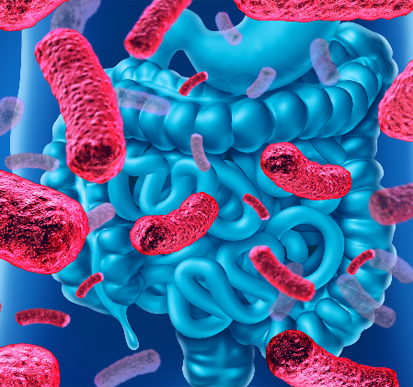
Our environment can have a substantial impact on our gut microbiome. Early exposure to microbes, such as farm exposure, place of birth, presence of siblings or pets are all suggested to influence the early colonisation of our gut. Several studies have reported that the number kids in a family affects the microbiota composition; first born infants are thought to be most often colonised by Enterobacteria and Clostridia, whereas the colonisation by Bifidobacteria, Bacteroides and Lactobacillus increase with an increasing number of siblings.
Society-level shifts have led to an increasing disconnect between humans, the outdoor environment and its micro-organisms with which we have co-evolved. My own studies 20 years ago showed we typically spend nearly 90% of our time in the built environment 1. We live in tighter, more sterile homes than ever before, which leads to a reduction in exposure to a great diversity of environmental micro-organisms, with particular strains of mould and some other species increasing inside the homes 2.
Interestingly, a number of studies show an increased exposure to rural environments with greater microbial diversity reduces the risk of a child developing sensitisation to allergens in early childhood. In fact, coming from a farm environment has been considered the strongest protective effect in relation to asthma and allergy in children. The microbial profile in our domestic urban environments differs considerably from those in rural areas in levels, composition, and diversity and often does not reflect what we have evolved around. All developed nations have gone through a rapid increase in allergies and autoimmunine diseases associated with the movement from rural to urban environments and lifestyles. Within just one generation, our contact with domestic animals and nature, and unpasteurized foods, has significantly declined while allergy rates have risen. As an example, just having pets and exposure to pets during childhood has been associated with lower prevalence of allergic disease. We have also lost a lot of contact with our soils and gardens and, as a result, with a rich biodiversity of micro-organisms. Just one teaspoon of rich soil contains more than 100 million bacteria. Unless of course the soil has been treated with toxic chemicals.
While people are overly concerned about bacteria on surfaces and in the air through all the television marketing, the real issue is mould that can grow in homes and buildings and the conditions that increase its presence. We have found serious overgrowth of moulds in many homes we have researched with occupants displaying a microbiome resembling that of their contaminated home.